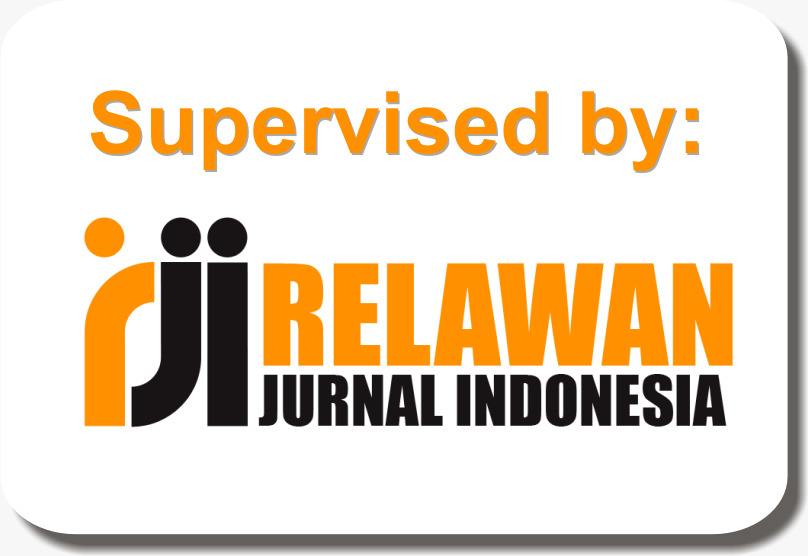ANALISIS PENERIMAAN APLIKASI FINTECH DENGAN HEDONIC MOTIVATION SYSTEM ADOPTION MODEL
Abstract
Keywords
Full Text:
PDFArticle Metrics :
References
S. Mamonov, “The Role of Information Technology in Fintech Innovation: Insights from the New York City Ecosystem BT - Responsible Design, Implementation and Use of Information and Communication Technology,” 2020, pp. 313–324.
I. Esteban-Millat, F. J. Martínez-López, M. Pujol-Jover, J. C. Gázquez-Abad, and A. Alegret, “An extension of the technology acceptance model for online learning environments,” Interact. Learn. Environ., vol. 26, no. 7, pp. 895–910, 2018, doi: 10.1080/10494820.2017.1421560.
D. P. Nugraha, B. Setiawan, R. J. Nathan, and M. Fekete-Farkas, “Fintech Adoption Drivers for Innovation for SMEs in Indonesia,” J. Open Innov. Technol. Mark. Complex., vol. 8, no. 4, p. 208, 2022, doi: 10.3390/joitmc8040208.
H. Rafique, A. O. Almagrabi, A. Shamim, F. Anwar, and A. K. Bashir, “Investigating the Acceptance of Mobile Library Applications with an Extended Technology Acceptance Model (TAM),” Comput. Educ., vol. 145, p. 103732, Feb. 2020, doi: 10.1016/J.COMPEDU.2019.103732.
G. S. Leng, S. Lada, M. Z. Muhammad, A. A. H. A. Ibrahim, and T. Amboala, “An exploration of social networking sites (SNS) adoption in Malaysia using technology acceptance model (TAM), theory of planned behavior (TPB) and intrinsic motivation,” J. Internet Bank. Commer., vol. 16, no. 2, Aug. 2011.
H.-F. Lin, “Examination of cognitive absorption influencing the intention to use a virtual community,” Behav. Inf. Technol., vol. 28, no. 5, pp. 421–431, Sep. 2009, doi: 10.1080/01449290701662169.
P. B. Lowry, J. E. Gaskin, N. W. Twyman, B. Hammer, and T. L. Roberts, “Taking ‘fun and games’ seriously: Proposing the hedonic-motivation system adoption model (HMSAM),” J. Assoc. Inf. Syst., vol. 14, no. 11, pp. 617–671, 2013, doi: 10.17705/1jais.00347.
W. Quin Seng and O. Choon Hee, “Factors Influencing the Intention to Use E-Wallet: An Extended Hedonic-Motivation System Adoption Model,” Int. J. Acad. Res. Bus. Soc. Sci., vol. 11, no. 11, 2021, doi: 10.6007/ijarbss/v11-i11/11379.
Y. W. Saragih and B. Rikumahu, “Analisis Faktor Adopsi E-Wallet Gopay, OVO, dan DANA dengan Model UTAUT2 pada Masyarakat Jawa Barat,” Nominal Barom. Ris. Akunt. dan Manaj., vol. 11, no. 1, pp. 98–121, 2022, doi: 10.21831/nominal.v11i1.43075.
D. Sarumaha and J. J. C. Tambotoh, “Evaluasi Penerimaan Fintech Berdasarkan Model DeLone-McLean dan Penerimaan Teknologi,” J. Nas. Teknol. dan Sist. Inf., vol. 7, no. 3, pp. 199–210, 2022, doi: 10.25077/teknosi.v7i3.2021.199-210.
S. G. Sutton, V. Arnold, P. Collier, and S. A. Leech, “Leveraging the synergies between design science and behavioral science research methods,” Int. J. Account. Inf. Syst., vol. 43, p. 100536, Dec. 2021, doi: 10.1016/J.ACCINF.2021.100536.
W. B. T. S. Putra, “Problems, Common Beliefs and Procedures on the Use of Partial Least Squares Structural Equation Modeling in Business Research,” South Asian J. Soc. Stud. Econ., vol. 14, no. 1, pp. 1–20, 2022, doi: 10.9734/sajsse/2022/v14i130367.
G. Zhang et al., “Study on the Influencing Factors of Digital Transformation of Construction Enterprises from the Perspective of Dual Effects—A Hybrid Approach Based on PLS-SEM and fsQCA,” Sustain., vol. 15, no. 7, 2023, doi: 10.3390/su15076317.
H. Oktavia, L. Abdurrahman, and R. Mulyana, “Pembuatan Model Balanced Scorecard TI Menggunakan Pendekatan Structural Equation Model (SEM) Berbasis Varian di PT. Telekomunikasi Indonesia TBK Pada Unit Enterprise Service,” e-Proceeding Eng., vol. 8, no. 5, pp. 9347–9354, 2021.
L. Abdurrahman and R. Mulyana, “Pemodelan Nilai Teknologi Informasi Menggunakan Structural Equation Modeling (Sem),” JIPI (Jurnal Ilm. Penelit. dan Pembelajaran Inform., vol. 7, no. 2, pp. 469–477, 2022, doi: 10.29100/jipi.v7i2.2825.
A. Fauzan, M. B. Triyono, R. A. P. Hardiyanta, R. W. Daryono, and S. Arifah, “The Effect of Internship and Work Motivation on Students’ Work Readiness in Vocational Education: PLS-SEM Approach,” J. Innov. Educ. Cult. Res., vol. 4, no. 1, pp. 26–34, 2023, doi: 10.46843/jiecr.v4i1.413.
F. A. N. Yunus et al., “Learning transfer exploration model from skill institute to workplace, pls-sem approach,” J. Tech. Educ. Train., vol. 13, no. 1, pp. 74–85, 2021, doi: 10.30880/jtet.2021.13.01.008.
M. Christian, L. Girsang, and H. Yulita, “Measuring Ease of Use Aspects of Shopee Usage Behavior during Pandemic using PLS-SEM Approach,” no. December, pp. 192–197, 2022, doi: 10.5220/0010750000003112.
P. K. Ozili, “The acceptable R-square in empirical modelling for social science research,” Soc. Res. Methodol. Publ. Results A Guid. to Non-Native English Speak., no. March, pp. 134–143, 2023, doi: 10.4018/978-1-6684-6859-3.ch009.
L. Law and N. Fong, “Applying partial least squares structural equation modeling (PLS-SEM) in an investigation of undergraduate students’ learning transfer of academic English,” J. English Acad. Purp., vol. 46, p. 100884, Jul. 2020, doi: 10.1016/J.JEAP.2020.100884.





